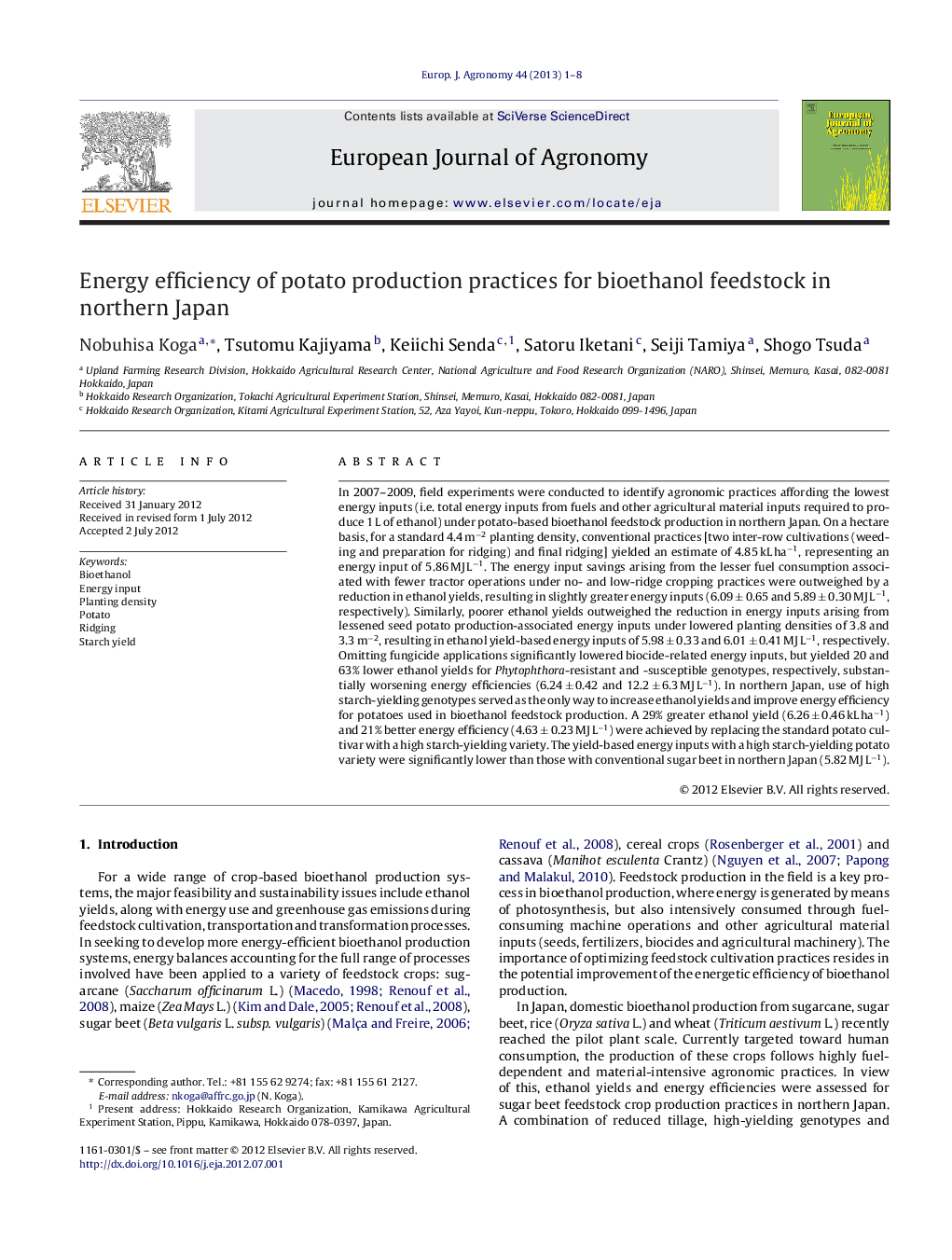| کد مقاله | کد نشریه | سال انتشار | مقاله انگلیسی | نسخه تمام متن |
|---|---|---|---|---|
| 4509154 | 1624482 | 2013 | 8 صفحه PDF | دانلود رایگان |

In 2007–2009, field experiments were conducted to identify agronomic practices affording the lowest energy inputs (i.e. total energy inputs from fuels and other agricultural material inputs required to produce 1 L of ethanol) under potato-based bioethanol feedstock production in northern Japan. On a hectare basis, for a standard 4.4 m−2 planting density, conventional practices [two inter-row cultivations (weeding and preparation for ridging) and final ridging] yielded an estimate of 4.85 kL ha−1, representing an energy input of 5.86 MJ L−1. The energy input savings arising from the lesser fuel consumption associated with fewer tractor operations under no- and low-ridge cropping practices were outweighed by a reduction in ethanol yields, resulting in slightly greater energy inputs (6.09 ± 0.65 and 5.89 ± 0.30 MJ L−1, respectively). Similarly, poorer ethanol yields outweighed the reduction in energy inputs arising from lessened seed potato production-associated energy inputs under lowered planting densities of 3.8 and 3.3 m−2, resulting in ethanol yield-based energy inputs of 5.98 ± 0.33 and 6.01 ± 0.41 MJ L−1, respectively. Omitting fungicide applications significantly lowered biocide-related energy inputs, but yielded 20 and 63% lower ethanol yields for Phytophthora-resistant and -susceptible genotypes, respectively, substantially worsening energy efficiencies (6.24 ± 0.42 and 12.2 ± 6.3 MJ L−1). In northern Japan, use of high starch-yielding genotypes served as the only way to increase ethanol yields and improve energy efficiency for potatoes used in bioethanol feedstock production. A 29% greater ethanol yield (6.26 ± 0.46 kL ha−1) and 21% better energy efficiency (4.63 ± 0.23 MJ L−1) were achieved by replacing the standard potato cultivar with a high starch-yielding variety. The yield-based energy inputs with a high starch-yielding potato variety were significantly lower than those with conventional sugar beet in northern Japan (5.82 MJ L−1).
► We sought potato cultivation practices with low energy inputs per liter of ethanol.
► Changes in ridge and planting densities had little impacts on the energy costs.
► Omitting fungicide application increased energy inputs per liter of ethanol yielded.
► The only way to lower the energy costs was use of a high-yielding genotype.
Journal: European Journal of Agronomy - Volume 44, January 2013, Pages 1–8